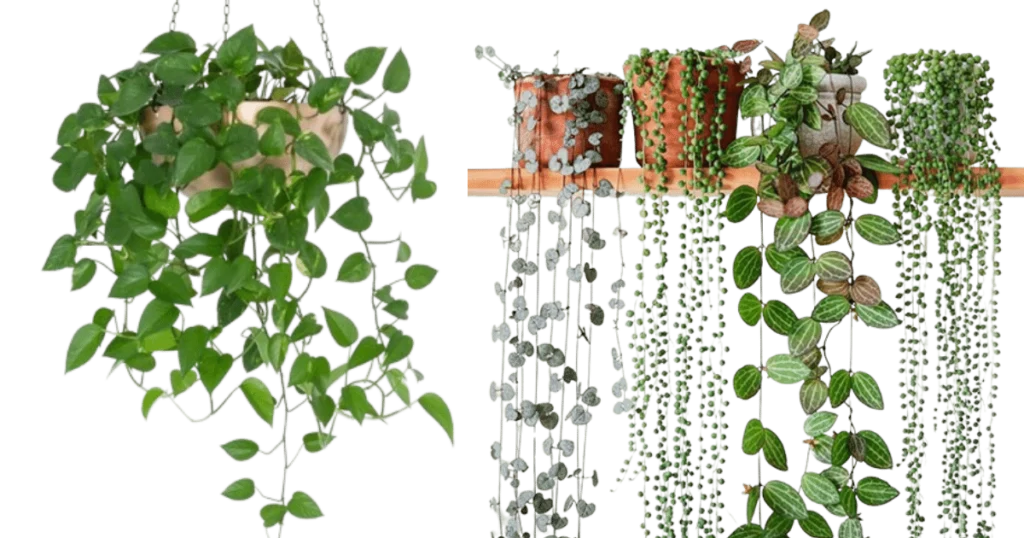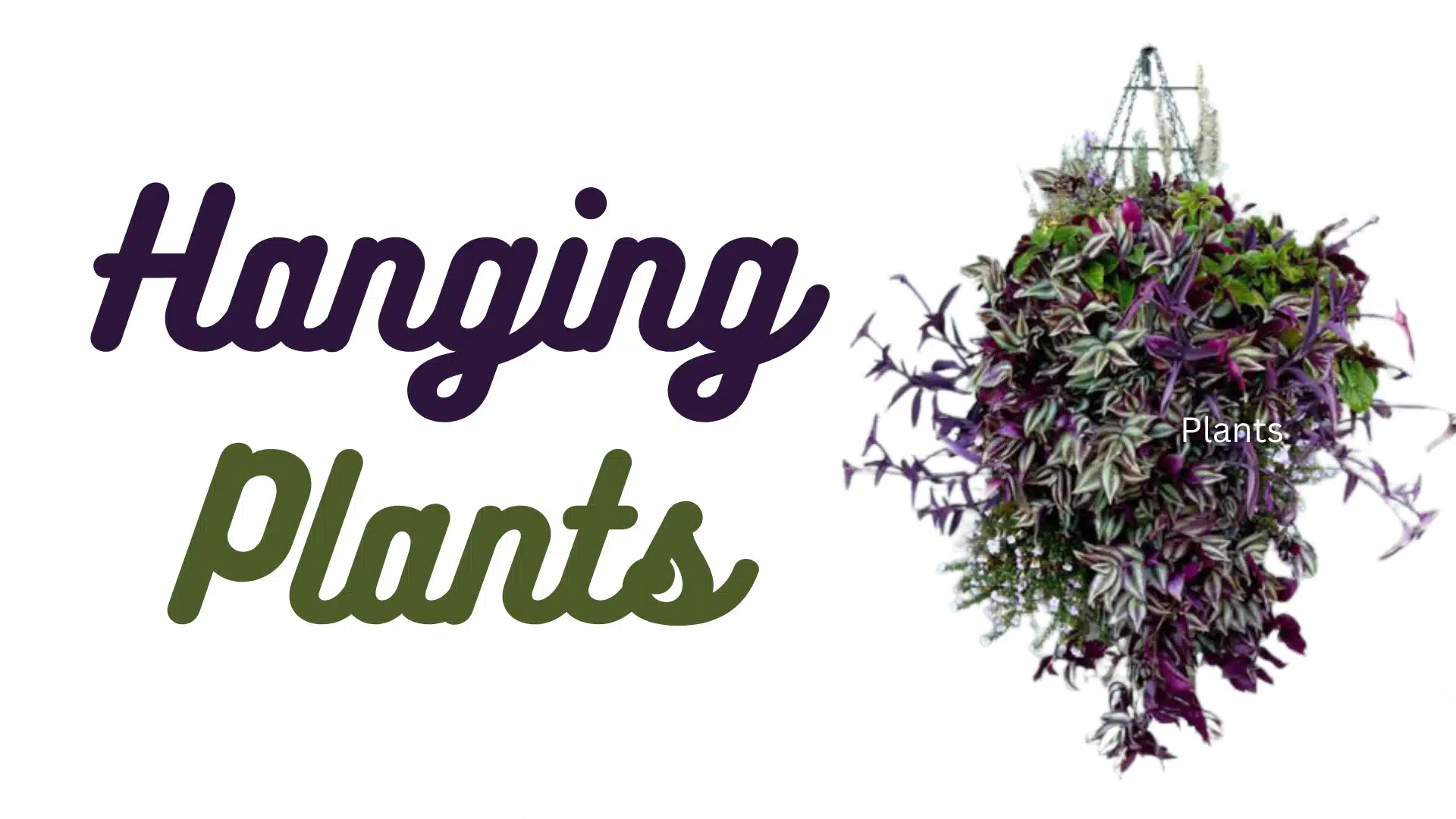Unleashing the Charm of Hanging Plants
Hanging plants have a captivating charm and bring nature indoors. They can make ordinary areas look more vibrant and beautiful. These green companions add life, color, and serenity to our homes. Whether hanging from the ceiling or placed on walls, they promote a greener and more peaceful lifestyle.
Elevate Your Décor with Hanging Greenery
1. Artistic Flourish
Hanging plants are like live art pieces because they give a room a look that is always changing. Their moving leaves give the illusion of depth and movement, making them interesting focus points that bring any room to life. Try out different sizes, shapes, and textures to make your floral beauty.
2. Versatile Space Utilization
If you have limited space in your home, hanging plants are a great idea. They save space because they can be placed on vertical surfaces instead of taking up floor space. They also add a nice touch to areas that are usually ignored, like high-reaching walls. You can get creative with where you hang them, like in a hallway, above your workspace, or in groups to make a relaxing green oasis.
3. Biophilic Bliss
Hanging plants are not only pretty, but they also make us feel more linked to nature. Studies have shown that they are good for our health in many ways, such as lowering stress, boosting imagination, and making us healthier generally. Although we live in cities, they make us feel calm and peaceful by reminding us of the nature world.
Nurturing Hanging Plants: Tips for Success
1. Species Selection
Pick plants that will fit in with your home and life. Spider plants, ferns, and drag vines like pothos are easy to take care of and should be used as starting plants. Think about how much light it needs, how wet it needs to be, and how easy it is to care for.
2. Aesthetic Placement
Play with heights and arrangements. Mix and match different plant species to create stunning visual differences. Experiment with macramé hangers, DIY holders, or recover items to add a personalized touch to your green displays.
3. Maintenance and Care
Establish a consistent watering routine and monitor plant health regularly. Pruning dead leaves, fertilizing as needed, and periodically rotating plants to ensure even growth are vital practices for their well-being.
Embrace the Zen of Hanging Gardens
Embracing hanging plants goes beyond mere embellishment; it’s a life statement—a commitment to care for life and calm within our abodes. Let these suspended greens be your daily dose of peace, a proof of the beauty and resilience of nature coexisting harmoniously with our modern living spaces.
4. Therapeutic Engagement
Engage with your hanging plants as a form of self-care. Tending to their needs, growing new growth, or simply note their peaceful beauty can be therapeutic, and promote a sense of mindfulness and connection.
5. Seasonal Symphony
Celebrate the changing seasons by rotating your hanging plants. Embrace blossoming flowers in spring, lush greens in summer, warm hues in autumn, and resilient evergreens in winter, ensuring a perennially captivating environment.
6. Community and Sharing
Join communities or social groups dedicated to plant enthusiasts. Share experiences, tips, and even plant cuttings to expand your botanical repertoire and foster a sense of camaraderie among fellow plant lovers.
FAQs Of Hanging plants
What are the best plants for hanging indoors?
Hanging plants that thrive indoors include spider plants, pothos, philodendrons, ferns, hoyas, and trailing succulents like a string of pearls or burro’s tail. These plants allow various light conditions and are relatively low-maintenance.
How often should I water my hanging plants?
The watering frequency depends on factors like plant species, pot size, and environmental conditions. Generally, check the soil is wet and water when the top inch of soil feels dry.
How do I prevent my hanging plants from becoming leggy?
Regular pruning encourages bushier growth. Pinch off the tips of vines to promote branching and fuller foliage. Rotating the plant periodically also helps ensure even growth on all sides.
Can I hang plants in rooms with limited natural light?
Yes, several plants tolerate low-light conditions. Consider snakes, ZZ plants, or peace lilies, which can thrive in areas with minimal sunlight. However, ensure they receive some indirect light to maintain their health.
Are there any safety considerations for hanging plants?
Ensure that your hanging plants are properly secured using appropriate hooks or fixtures. Check the weight-bearing capacity of the hooks to prevent accidents. Avoid placing them in high-traffic areas where they might get knocked over.
What causes the yellowing or browning of leaves in hanging plants?
If you give a plant too much water, not enough water, not enough light, or if bugs start living in it, the leaves can change color. To avoid this problem, water the plant properly, make sure it gets enough light, and check for bugs regularly.
How do I fertilize my hanging plants?
Use a balanced, water-soluble fertilizer diluted to half-strength during the growing season. Apply it every 4-6 weeks to provide essential nutrients for healthy growth.
Can I propagate hanging plants to create new ones?
Many hanging plants, like pothos or spider plants, are easily propagated by rooting stem cuttings in water or soil. This is a great way to expand your plant collection.
What temperature range is suitable for hanging plants?
Most indoor hanging plants thrive in temperatures between 65-75°F (18-24°C). Avoid placing them near drafts or heating/cooling vents that might subject them to extreme temperature fluctuations.
How do I revive a drooping, hanging plant?
Assess the plant’s wetness level and lighting factors. Ensure it’s not over or underwatered. Consider trimming away damaged or wilting parts and changing its placement to a more suitable environment.
Create Your Hanging Garden Haven
Hanging plants are not just decorations. They are like companions that tell stories of growth, strength, and the calming power of nature. Please include them in your home to create a peaceful and lively atmosphere. Embrace the beauty of hanging greenery and enjoy the soothing and serene ambiance it brings.

Here’s a table providing an overview of hanging plants and the essential details about them:
| Aspect | Description |
|---|---|
| Definition | Hanging plants are botanical species that trail or cascade downwards, typically grown in hanging baskets or suspended containers. |
| Popular Varieties | Examples include Spider Plant (Chlorophytum comosum), Pothos (Epipremnum aureum), String of Pearls (Senecio rowleyanus), etc. |
| Ideal Conditions | Requires well-draining soil, adequate sunlight or partial shade, appropriate watering based on plant type, and good air circulation. |
| Benefits | Enhances indoor aesthetics, adds greenery without occupying floor space, improves air quality by absorbing toxins, and reduces stress. |
| Maintenance | Regular pruning to control growth, occasional repotting, monitoring soil moisture, and cleaning leaves to prevent dust buildup. |
| Propagation Methods | Can be propagated through stem cuttings, division, or layering, offering an opportunity to expand the plant collection. |
| Common Issues | Susceptible to overwatering, root rot, pest infestation (such as spider mites), and inadequate light leading to leggy growth. |
| Suitable Indoor Areas | Ideal for spaces with limited floor space, such as apartments, offices, or rooms with hanging hooks or ceiling mounts. |
| Design and Display | Offers versatile decorative options, complementing interior design with various hanging styles, arrangements, and container choices. |
| Notable Characteristics | Varied foliage textures, colors, and growth habits, providing diversity in appearance and adapting to different environments. |

